Pes Anserine Bursitis
Read More >
Pes anserine bursitis is an inflammatory condition of the bursa that sits beneath the pes anserine, on the inside of the knee. It is the insertion point of three tendons. The three tendons are of the sartorius, gracilis, and semitendinosus muscles.
The insertion of these tendons looks like a goose’s foot, hence the Latin name, pes anserine.
The best treatment for this condition includes physical therapy, exercises, gait assessment, massage, taping or using a brace, and anti-inflammatory medication. Sometimes shockwave treatments or cortisone injections are also useful. The use of ice is commonly used for reducing pain in the short term.
Stretches can be effective around the muscles around the pes anserine area, but no pressure directly to the bursa.
Holding a static stretch reduces the tone of a muscle to make it feel more relaxed or loose. More relaxed muscles will reduce the pressure and compression on the pes anserine bursa. In addition to stretches, you can foam roll or have massage therapy for these muscles.
For the following static stretches, hold each for 30-45 seconds and should be repeated every 2-3 hours for optimal effect.
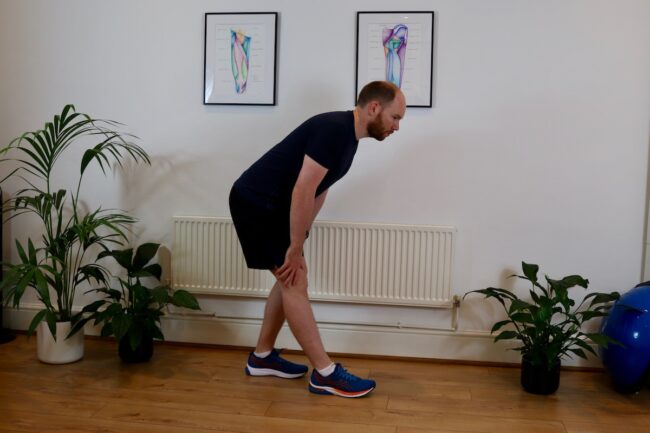
Stand with one leg forwards, with a straight knee and your foot flat on the floor. Bend forwards from your hips with a straight back and chest lifted.
You should feel this stretch at the back of your thigh.
Stand on one leg holding the wall with your hand for support. Bend your knee to raise your heel towards the back of your hip, and hold your ankle with your hand to pull the heel closer. Stand straight, keep your knees parallel, and push your hip forward.
You should feel this stretch at the front of your thigh.
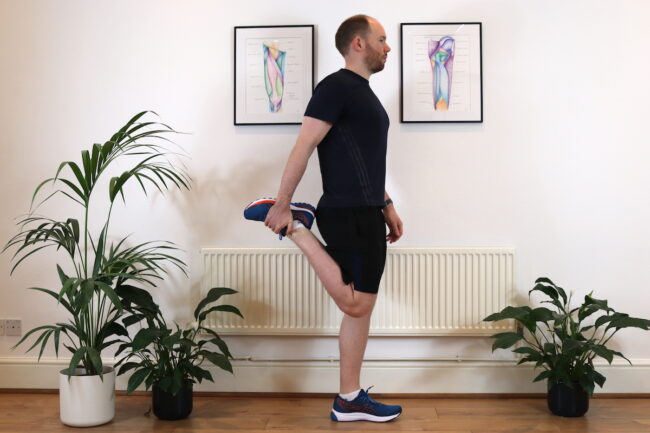
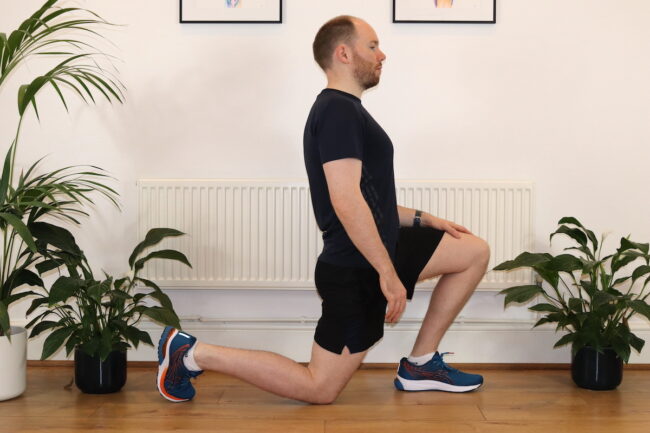
Kneel on the floor on one knee with your other leg stepped forward. Keep your body upright and move your hip forwards.
You should feel a stretch at the front of your hip.
Stand on a step with your heels hanging off the back edge. Hold onto the wall for balance. Lower your heels as far as they can go.
You should feel this at the back of your calves.
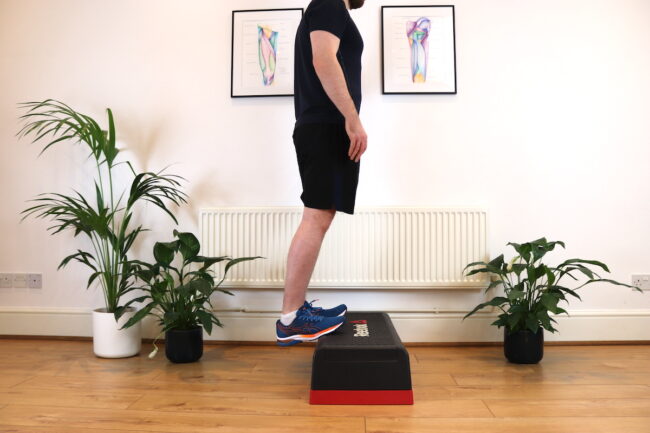
Strengthening exercises can address areas of weakness as well as load the pes anserine muscles and tendons, which builds their tolerance to load.
An assessment with a physical therapist is advised so they can provide you with specific exercises for your needs. Here are a few common exercises that are prescribed to help recover from pes anserine bursitis.
These should be done 3 times per week, about 8-12 repetitions for 3-4 sets, taking a 2-3 minute break between sets.
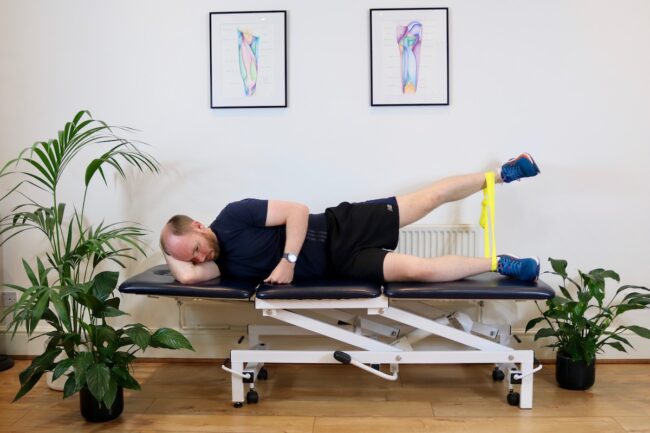
Lie on your side with a resistance band around your ankles.
Keep your pelvis slightly rolled forward and top leg in line with your body with a straight knee.
Raise your leg up and backward into the resistance of the band.
Hold for 2-3 seconds then lower your leg.
Lie on your back with a soft ball between your ankles.
Squeeze your ankles together pushing into the ball.
Hold this pressure for 2-3 seconds then release.

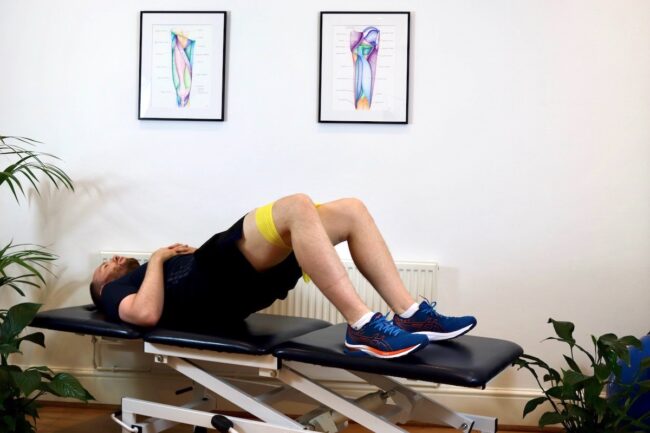
Lie on your back with a band around your lower thighs, knees bend to 90º.
Push firmly out against the resistance band while you tilt your pelvis backward, flattening your back against the floor and raise your pelvis high off the floor.
Hold for 2-3 seconds then lower.
Lie on your side with your feet and knees stacked and your hip about 20-30º flexed.
Keep your pelvis slightly rolled forward and lift your top knee, without rolling your pelvis backwards.
Hold for 2-3 seconds then lower your leg.
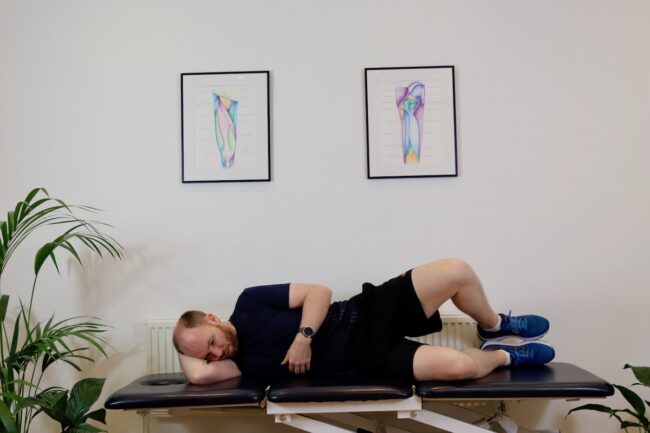

Stand with your feet hip-width apart, a slight bend in your knees, and holding a weight in your hands.
Bend forward from your hips, keeping a straight back and chest lifted. Bend until you feel your hamstrings tightening at the back of your thighs.
Hold for 2-3 seconds then return to standing, squeezing your glute muscles and pushing your pelvis forward.
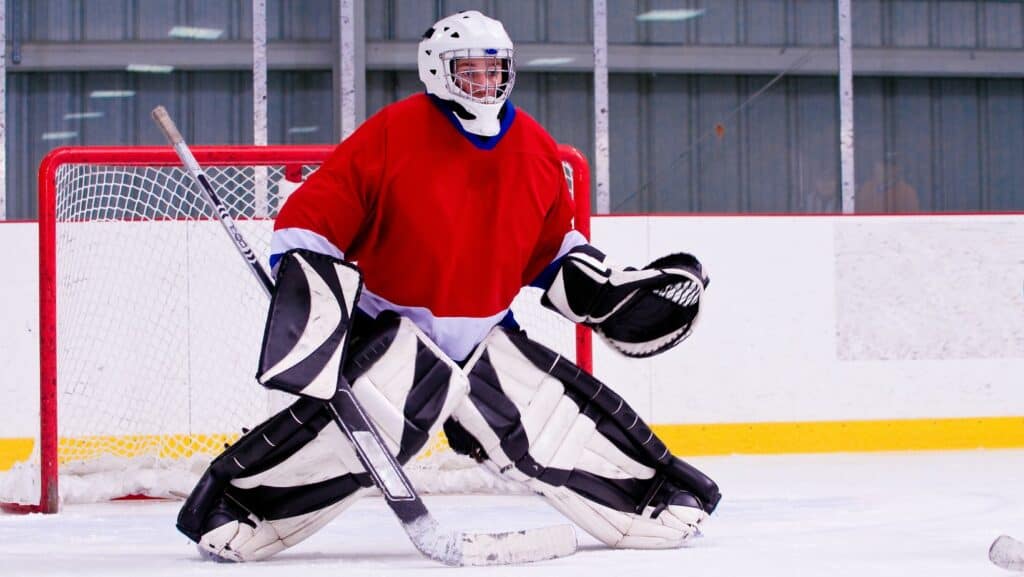
A Pes Anserine knee brace can offer support on the inside of the knee and improve poor control and excessive inward movement of the knee. When selecting a brace, it is essential to find one that fits well with no pressure directly over the pes anserine bursa.
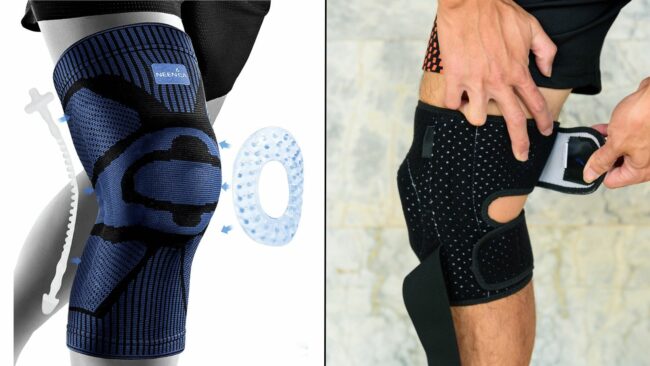
This article is written by James McCormack, a Lower Limb Specialist who is an expert in treating Knee Pain.
This is not medical advice. We recommend a consultation with a medical professional such as James McCormack if you are experiencing any of the symptoms discussed in this article. James offers Online Physiotherapy Appointments weekly and face-to-face appointments in his London clinic.